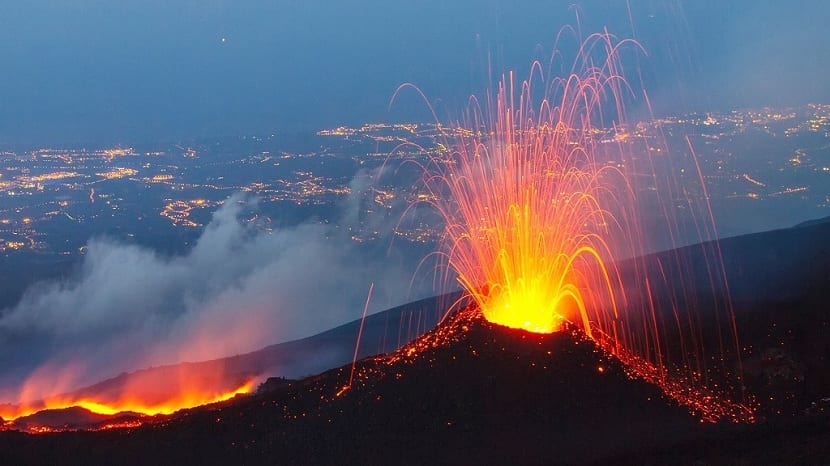
Volcanoes are capable of releasing large amounts of energy and destroy everything around him. They are the cause of the formation of islands and soils. Its activity is not always constant, but when a volcano is active it can really present a problem and an environmental risk.
Do you want to know everything about volcanoes?
Types of eruptions
The types of eruptions may depend on the shape and size of the volcano, as well as the relative ratio of gases, liquids (lava), and solids that come off. These are the types of eruptions that exist and their characteristics:
Hawaiian eruptions
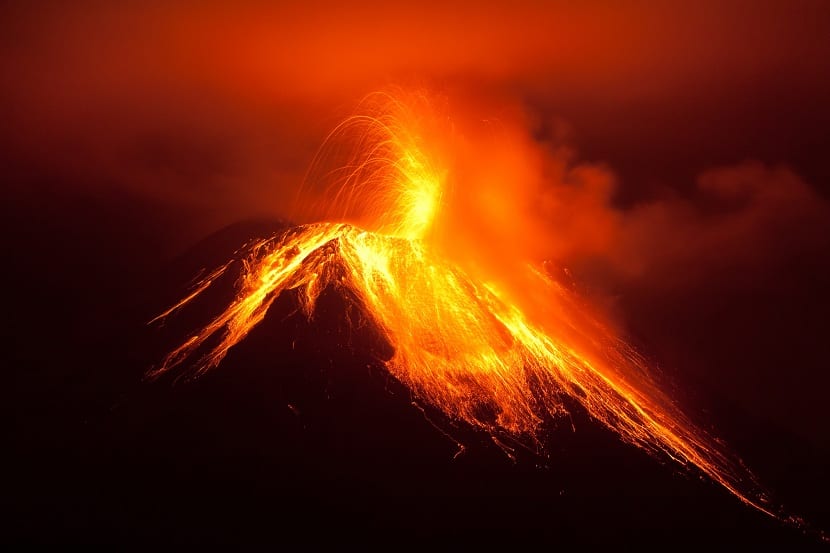
They are characteristics of fluid magmas of basic composition (they are mainly basaltic), typical of some oceanic islands such as is the Hawaiian archipelago, Where does your name come from.
They are eruptions that emit very fluid lavas and poor in gases, therefore, they are not very explosive. The volcanic building usually has gentle slopes and is shaped like a shield. The rates of rise of magma are fast and runoffs arise intermittently.
The danger of this type of rash is that it washes them are capable of traveling distances of several kilometers and they generate fires and destruction of the infrastructures with which it encounters.
Strombolian eruptions
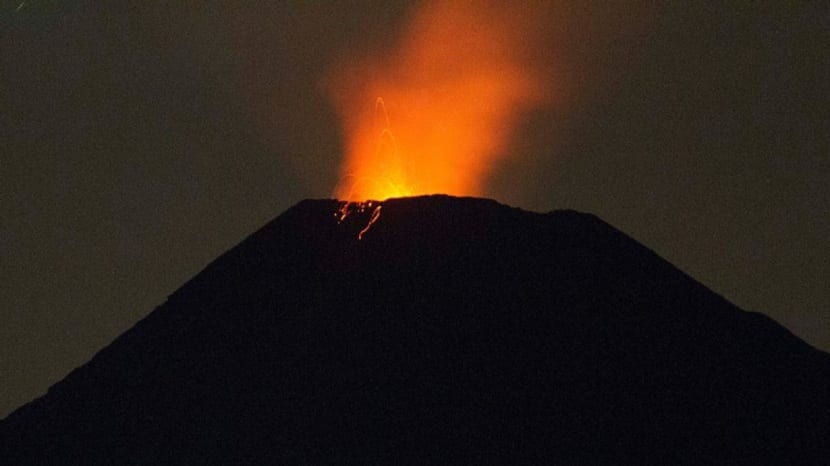
Magma, which is usually basaltic and fluid, generally rises slowly and mixed with large gas bubbles that rise up to 10 meters in height. They are capable of generating periodic explosions.
They do not usually generate convective columns and the pyroclasts, which describe the ballistic trajectories, are distributed within a few kilometers around the conduit. They are not usually very violent so their danger is low and they are capable of generating lava cones. These eruptions are found in volcanoes on the Aeolian island (Italy) and Vestmannaeyjar (Iceland).
Vulcan eruptions
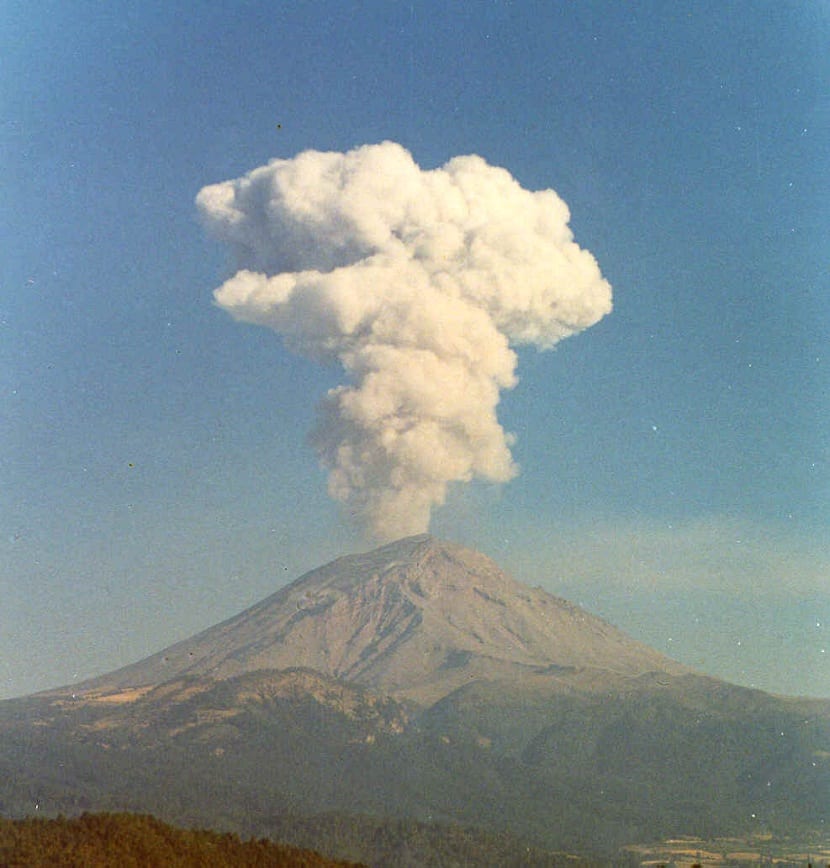
These are medium explosive eruptions caused by uncovering volcanic conduits obstructed by lava. The explosions occur at intervals of a few minutes to hours. They are common in volcanoes that emit magmas of intermediate composition.
The columns do not exceed 10 km in height. They are generally low-hazard eruptions.
Plinian eruptions
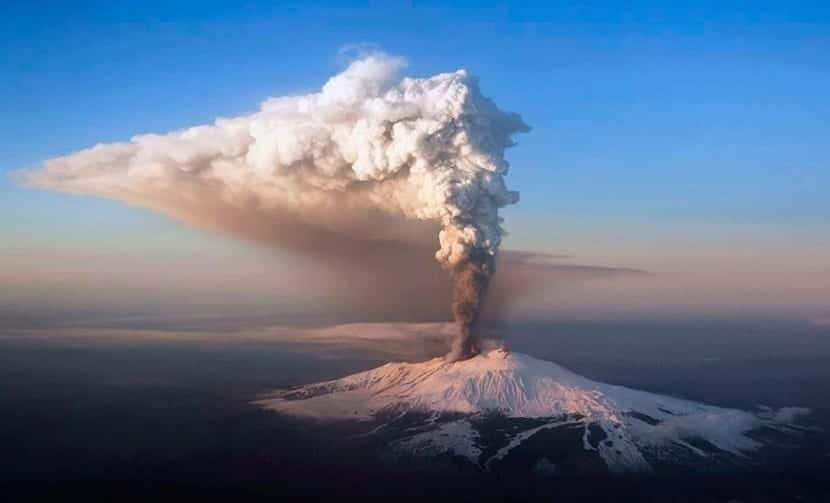
They are eruptions rich in gases that, when dissolved in magma, cause its fragmentation into pyroclasts (pumice and ash). This mixture of products emerges through the mouths with a high speed of ascent.
These eruptions are stably emitted, both in volume and speed. They include high viscosity siliceous magmas. For example the eruption of Vesuvius that took place in 79 BC. C.
They present a high risk, since the eruptive columns are mushroom-shaped and reach a lot of height (even reaching the stratosphere) and cause significant ash rains that affect a very high radius of action (several thousand square kilometers).
Surtseyan eruptions
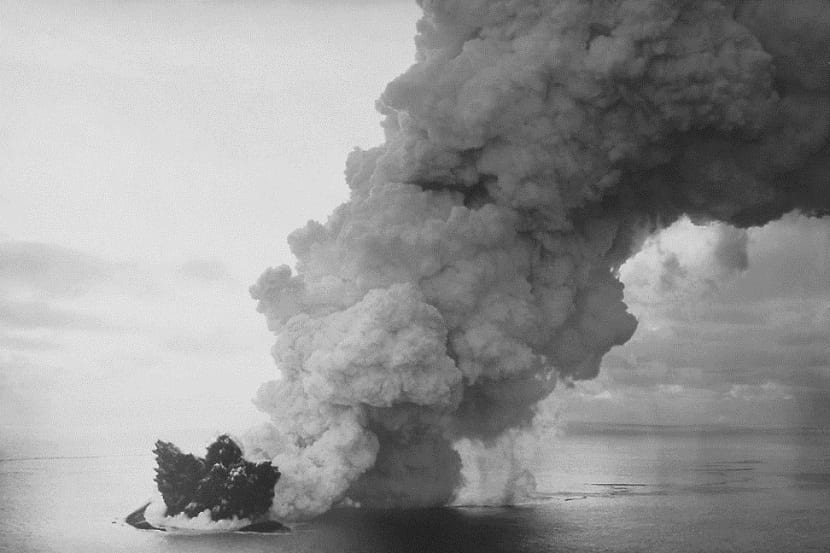
They are explosive eruptions in which magma interacts with large amounts of seawater. These eruptions give rise to new islands such as the Surtsey volcano eruption in southern Iceland, qwhich gave birth to a new island in 1963.
The activity of these eruptions is characterized by direct explosions in which large white clouds of vapor are produced mixed with black clouds of basaltic pyroclasts.
Hydrovolcanic eruptions

In addition to the already named Vulcanian and Plinian eruptions, in which the intervention of water seems proven, there are others of an exclusively phreatic nature (that is, they have little contribution of igneous material) that are induced by the rise of magma.
They are steam explosions produced in the rock above the magmatic heat source causing devastating effects from deflagration and sludge runoff.
How does a volcano work?

We have talked about the types of eruptions that exist, but we don't know how a volcano really works. To understand it in a simpler way, it will be explained with an easy example.
In a pressure cooker that boils water, the steam is pressing the internal walls by an increase in volume. As the temperature inside the pot increases, the volume of the steam takes up more space and makes more pressure, until there comes a moment when it is released through the valve and the steam is coming out of the pot causing a loud hiss.
What happens in volcanoes is something similar. The heat increases inside, until the materials inside are expelled along with the water vapor to the outside. The warmer the interior is, the more violent the eruption will be.
Volcanoes go through three phases:
- Explosion phase. The hot mass of pyroclastic materials presses outward. As cracks are found in the ground, it breaks them violently and explosions of gases and various materials can take place. These are called the more solidified blocks of magma, ash or fragments. On numerous occasions, volcanic eruptions are accompanied by some seismic activity.
- Eruption phase. The molten rocks are emerging from the crest of the volcano. Lava is usually at temperatures between 1000 and 1100 degrees. Afterwards, it gradually cools down and hardens until it acquires the characteristic appearance of rocks.
- Emanation phase. Once all the solid materials are exhausted, the steam and gas are released.
Parts of a volcano

Volcanoes have three main parts:
- Magmatic chamber. It is found deep below the earth's crust and is where lava accumulates.
- Fireplace. It is the conduit through which lava and gases are expelled.
- The crater. It is an opening in the upper part of the chimney that is shaped like a funnel.
The activity of volcanoes is very difficult to predict since they vary and depend on many complex factors to measure. Normally they alternate periods in which they are more inactive and other times they remain with moderate activity. The worst are those that sit idle for centuries and then erupt in disastrous eruptions.
Throughout history we can see how several cities have been completely destroyed by a volcano, see Pompeii and Herculaneum in ancient Rome.
With this information you can learn more about volcanoes and their characteristics.